THE PROPERTY PLAYBOOK
Insights for Selling Smarter and Faster
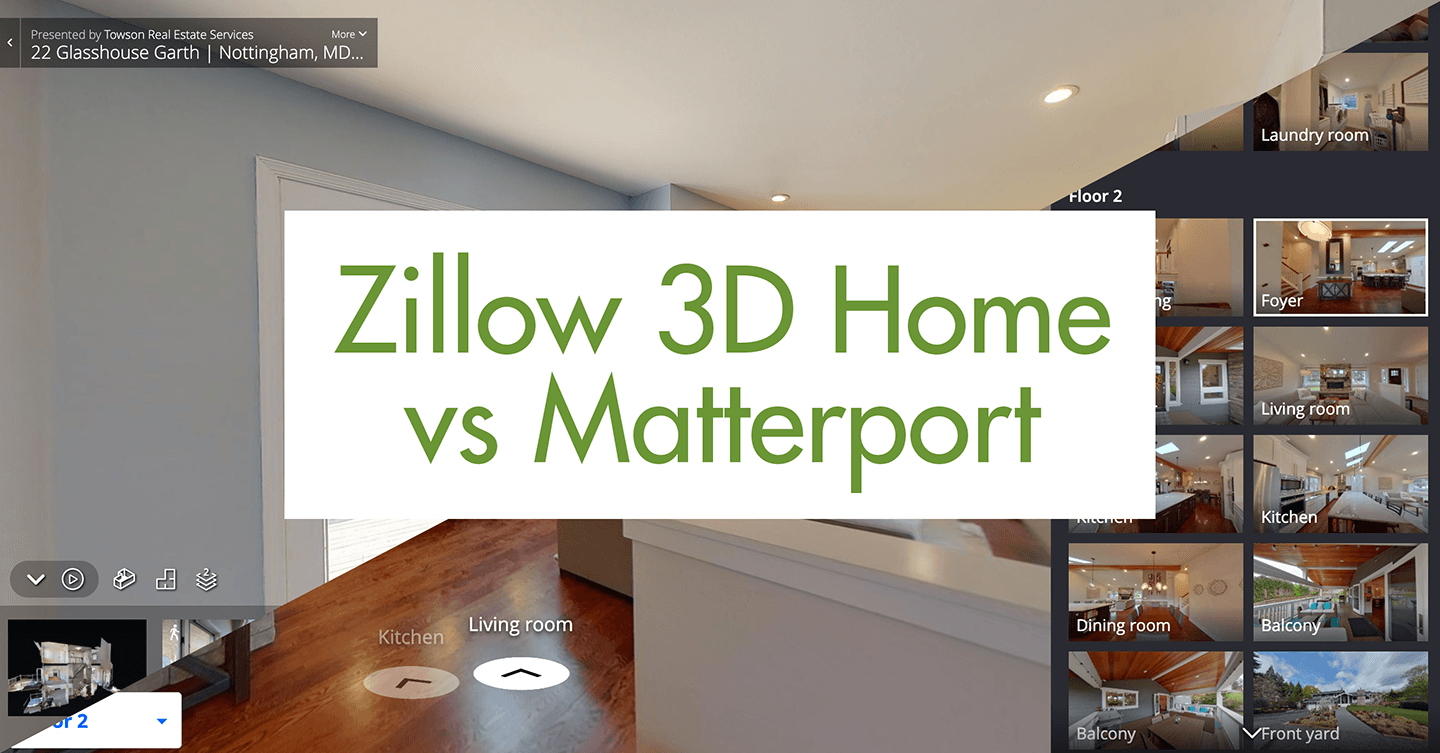
Updated February 8th, 2020 Real estate and rental marketplace Zillow recently launched its 3D Home™ app, which it promotes as a virtual tour that will “elevate your listings.” With so many marketing tools out there (and more coming), it can be hard to determine what works and what doesn’t work to attract buyers. Like many […]
The post What is the Difference Between Matterport and Zillow 3D Home Virtual Tours? appeared first on Hometrack Real Estate Marketing.
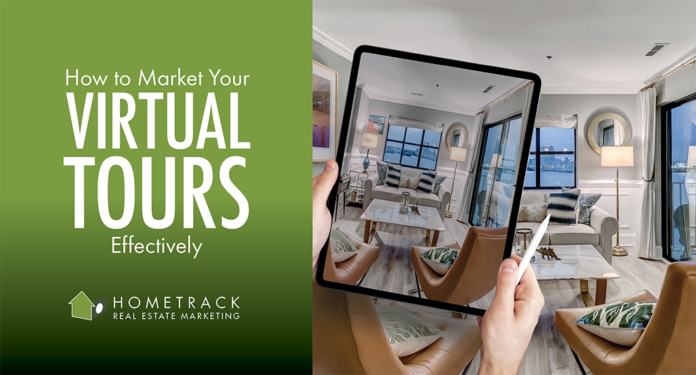
Virtual tours have risen in popularity in recent months, largely due to COVID -19 . While they have been around for years, social distancing and stay-at-home orders around the globe have made virtual tools an essential element of real estate. Really, 3D tours may have become just as popular without coronavirus on the scene – indeed they have been on the rise for some time – nevertheless, one thing seems certain: virtual tours are here to stay. That’s a good thing, since 3D virtual tours are loved by buyers, sellers, and agents alike. Companies such as Matterport have been working tirelessly to produce products that agents can use to market and sell homes faster and at higher prices . Virtual tour technology has also become more accessible, putting powerful tools within reach of any marketing budget. Some agents choose to hire a professional 3D virtual tour service that employs the latest and best in 3D camera and editing technology. Others opt to scan homes with their iPhone (which is also an option with Matterport ). With all of the choices available, it only seems natural to offer virtual tours as part of your marketing mix. But just how might you use those virtual tours to reach your audience effectively? Think about it. A fisherman needs to know where the fish are hanging out, go to where they are, and cast the bait the right way in order to bring home dinner. When it comes to marketing your virtual tours, how and where are you casting? Consider the following ideas to use virtual tours effectively. Include virtual tours with your listings The first and obvious choice for placement of a virtual tour is in a listing. You can link your virtual showcase to the MLS and real estate sites such as Zillow, Trulia, and Realtor.com – or rental sites like Zumper or VRBO . Including a virtual tour in a property listing gives it the greatest exposure and puts it in view of the more than ninety percent of buyers who begin their home searches online. Post virtual tours to social media Social media sites, the likes of Facebook, Instagram, Twitter, Clubhouse , YouTube, LinkedIn, and others all offer opportunities to showcase a home with a virtual tour. Matterport’s teaser videos, included with every digital twin , are a great way to show off the best parts of a 3D tour through your social media channels. You can also feature a virtual tour in your social media ads. Feature a virtual tour on your business website When you include 3D home tours on your business website, you accomplish several things. For one, virtual tours make for quality content for your site’s visitors. 360 degree photos and videos on a website significantly increase traffic and produce higher engagement rates. That is good for your visitors – and it is good for you, since Google recognizes when your content is relevant and useful. As a result, Google boosts your site’s rankings in the search results. So, not only do virtual tours attract and keep attention, they also help with your SEO strategy . Embed a tour on your homepage or create a landing page to which you can send customers from other places in your marketing campaigns. Publish a virtual tour of your business on Google Street View When people search for products and services on the internet, frequently they turn to mapping products, like Google Maps. If you want consumers to engage with your business, you need to have a solid search listing for your business. One way to accomplish that is to add a virtual tour of your own office to Google Street View so that your business is recognized and promoted in your market – showing up in search results, on Google Maps, on your Google Plus page, and your Google local page. When you do, you control the content that appears when people see your business online. And a 3D virtual walkthrough of your business gives you a stronger presence than a simple photograph or panorama. Send virtual tours through email Email campaigns, as you well know, allow you to maintain tighter control over who receives your messages than, say, YouTube or Instagram might. While you usually cannot embed a virtual tour in an email, you can create a thumbnail image with a link to your Matterport showcase and share the tour with whomever you like. Or, place the thumbnail in your email signature and include a tour link in every email you send. Direct customers to a virtual tour through direct mail and other print ads In this digital age, you might find it ironic that many of your younger buyers, often drowning in a sea of digital messages, find print advertising to be a refreshing reprieve. Direct mail of postcards or brochures , of course, has not lost its importance, especially when customers have been forced to spend so much time at home in recent months. But print ads also have other advantages. Many consumers like the touch and feel of a printed page, and many find them to be a more authoritative source of information. There are probably not a lot of people pinning their tablets to the refrigerator or saving home pics as their desktop wallpaper. They will, however, pin up a postcard and hold on to your hard-copy real estate flyer longer than a digital ad. So, use those printings to your advantage by including high-quality professional photography and QR codes linking to your virtual tour landing pages on your website. ________________________________________________ At a time when in-person gatherings are few, 3D virtual tours have become a go-to tool to showcase a listing. They are the “ new open house ”, and may remain so for the foreseeable future. So, if you are going to lean on the technology, make sure to get your virtual tours in front of as many of your potential customers as you can using a good dose of your imagination sparked by some of the strategies listed here.
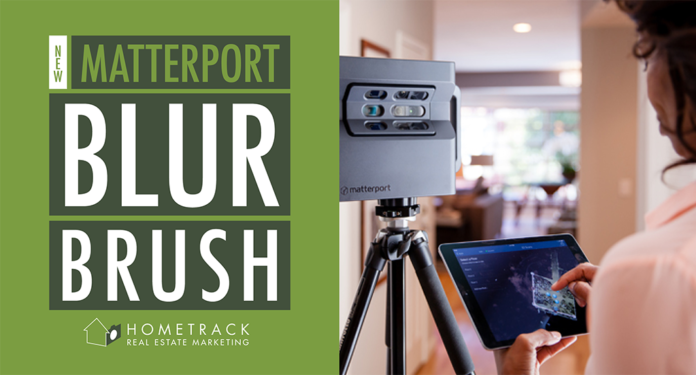
Matterport just announced the release of their new editing tool, the Matterport Blur Brush , that offers added security for your customers. Matterport makes it easy to share properties simply and securely with their all-in-one 3D data platform that produces the “ digital t win ” of any space, indoors or out. Now, with their new Blur Brush tool , those properties can be featured without worrying about security concerns.
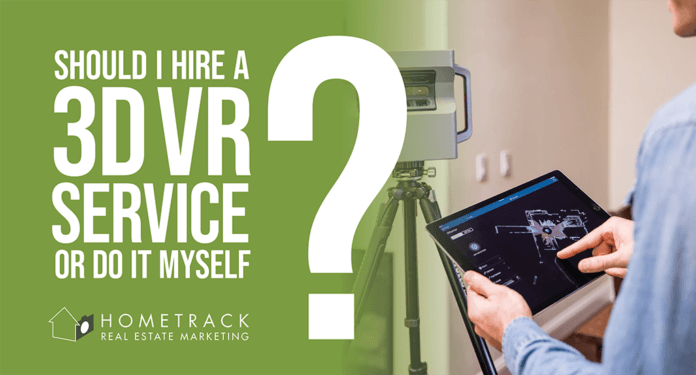
If you are looking to add virtual tours to your list of real estate marketing tools, is it best to contract with a professional photography service or do the job yourself? Among the many challenges that real estate agents face – especially through the shutdowns and social distancing that have resulted from the coronavirus pandemic – is how to show properties to potential buyers. Viewings can be difficult and time consuming under normal circumstances, let alone when dealing with COVID-19. 3D virtual tours present opportunities for those buyers to visit your listings without leaving the comfort and safety of their own homes. What is a virtual tour? A “virtual” tour could really be any representation of a property tour that is not live and in person. For example, a real estate video walkthrough – either pre-recorded or live on social media , Zoom, or other platform – could be considered a “virtual” tour. So could a series of 360-degree panoramic shots. Anything that offers customers a simulation of being onsite is, technically speaking, a “virtual” tour. But when most people think of a virtual tour, they are referring to an immersive 3D experience, complete with interactive 3D floor plans and mapping and the ability to navigate to any room and look in any direction, or to measure doorways and walls and countertops. A true virtual tour, like a Matterport showcase, creates a “ digital twin ” of a space and places the viewer into that space with complete control of their experience. With the click of a mouse button, visitors can walk the halls, enter each room, look up and down and around, and even take accurate measurements. They can read highlights of property features and view embedded drone photography or panoramic images. They can pan out to see a floor plan or dollhouse view of the building. All these and more are elements of a virtual tour. The value of a virtual tour The ability to harness the technology of a virtual tour presents some good news for an agent. In this day and age, when everything seems to be going online, a 3D virtual tour presents a convenient way for an agent to place a property in front of as many potential buyers as possible. Since more than ninety percent of those buyers begin their search online from the comfort of their own homes (or coffee shops, or anywhere else, really), a virtual tour allows them to pre-screen properties and find a fit for their criteria. When they have narrowed down their search, shoppers tend to schedule live visits only to those properties in which they are truly interested, which can mean more good news for an agent: saving time by showing homes in-person to clients who are serious. But there is a downside to the trend toward digital viewing online. The bad news? If your listings do not pop, if they do not have a strong online presence, you might miss out on a large swath of potential buyers, fifty one percent of whom (according to the National Association of Realtors ) now find their future homes online. Your selling success is increasingly tied to the quality of a listing’s online profile. So, while that online profile is helping to sort out the serious buyers from the not-so-serious “tire kickers”, if you are not portraying a high-quality product, your listings may just as soon wind up in the discard pile of too many prospective customers. Naturally, a first-rate collection of real estate photographs is essential. Nearly ninety percent of home buyers suggest that pictures play a huge role in their decision to pursue a property. Aerial images and real estate videos also help to showcase a home or other property and give your listing an edge. But for an extra touch, especially for homes at the upper end of the market, a 3D virtual tour can make a world of difference. There is another value of a virtual tour. NAR cites one of the biggest challenges facing real estate firms as the need to keep up with emerging technologies in the market, like virtual reality and other advances. Matterport 3D tours are compatible with many VR devices and offer a completely immersive experience to a growing segment of the market. Of course, you can sell a home without a virtual tour, and while most homes could benefit from one, not all homes require one. Still, more and more consumers are drawn to and even expect the technology – especially when they are under stay-at-home orders or prefer to remain socially distant. Certainly your luxury property listings should come with an accompanying virtual walkthrough. Same goes for properties in areas with a lot of out-of-town buyers (a phenomenon that has been on the rise in recent years). Likewise with homes in highly competitive markets. For some properties, first-class photography is probably sufficient. But for others, adding a virtual tour should be standard. Are virtual tours worth it? For many properties, yes. Professional service vs. DIY If you are interested in offering your clients access to 3D virtual tours, a question arises: should you try to create virtual tours on your own or contract with a professional photographer to capture the space for you? There is no clear cut answer to that question. Fortunately for you, there exists a range of options to suit your needs and those of your clients from one end of the market to the other. Whether you select a professional service or do it yourself really comes down to two things: cost and quality. Cost in terms of time and money; quality in terms of equipment, ability, and experience. As with any service you provide, be it 2D photography or print marketing , there exists a continuum between low cost and quality and high cost and quality. That is not to say that low cost always means low quality. On the contrary, someone (for instance) with a strong ability and loads of experience with photography might be capable of producing excellent listing photographs at a low cost with simple equipment. After all, today’s mobile phones come equipped with high resolution HDR cameras able to capture incredible images in the right hands. Conversely, an expensive but careless professional with the most expensive gear, but who lacks a keen eye for detail and composition, might yield less-than-satisfactory results. On one hand, your decision will be slanted toward your own ability. Are you a capable photographer already, or are you interested in learning to become one? Fortunately, 3D virtual tour capture is not so technique-driven as photography or videography. You do not necessarily need the same eye for composition and lighting. You need to be able to set up the equipment and allow it to perform scans of every room in a home. On the other hand, your decision will lean toward your interest in investing in 3D capture equipment. At the top end of the market is the Matterport Pro2 camera , coming in at the $3000 range. If you want to perform your own 3D scans with the utmost precision and clearest resolution, the Pro2 is the pinnacle of technology. Other options, such as the Insta360 OneR or Ricoh Theta cameras are more economical alternatives. But a Matterport 3D tour can even be captured on an iPhone . You probably would not select that device to portray a premium property, but for those with advertising on a budget, Matterport for iPhone offers an entry-level 3D tour option. So, should you hire a pro or should you do it yourself? Consider the following factors in your decision.
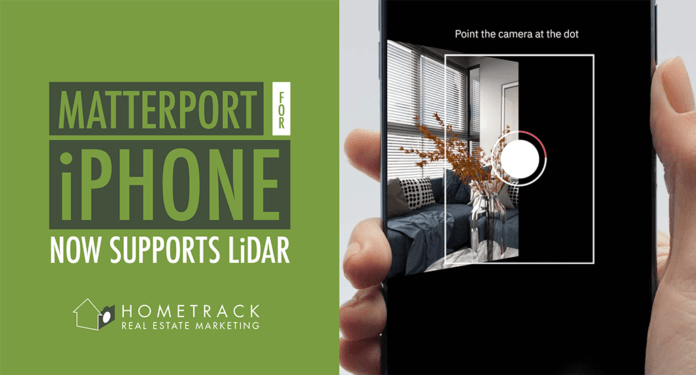
The concept behind LiDAR has been around since the 1960s and was used early on by NASA in its development of exploratory spacecraft. Now, when you pair Apple’s new iPhone 12 Pro Max with LiDAR support and Matterport for iPhone , you can literally capitalize on the space-age technology for your 3D virtual tours . How does LiDAR work? LiDAR, short for Light Detection and Ranging, is a type of 3D laser scanning. It is similar to sonar or radar, only instead of sending out sound waves (sonar) or electromagnetic waves (radar) to measure an object in the distance, LiDAR uses a laser to light up a targeted object. The laser light reflects off of the target and returns to a sensor. Differences in the return times and wavelengths of light are measured and are used to make digital 3D representations of the target. Besides its use in the space program, LiDAR has many other applications. For instance, LiDAR is the “eye” of many autonomous vehicles. It allows a vehicle to see in all directions simultaneously and to know the precise distances of all objects in relation to itself. LiDAR is also used in agriculture to create 3D elevation maps of land. Akin to drone mapping , the technology is used to identify areas that require more or less water or fertilizer, which helps farmers save on costs. 3D modeling with LiDAR can also be used for river surveys. The lasers can “see” beneath the surface of the water to map out the terrain. With that information, scientists can understand the flow of the water and monitor flood plains. LiDAR is used to detect pollution, to aid in archeology, to capture and model building structures, and of course, LiDAR is used for 3D scanning in real estate as well. What are the advantages of LiDAR with Matterport for iPhone? If you are going to create a “ digital twin ” of a home, business, or any other space, the Matterport Pro2 camera is considered to be the gold standard for 3D capture. That standard comes with a hefty price tag. When the precision of a Pro2 is required, many agents opt instead to contract a professional photography service for their 3D tours rather than lay out more than $3K on a camera. Of course, there are other, less expensive alternatives on the market, including the Ricoh Theta and the Insta360 One R . Both are 3D cameras that are compatible with Matterport. But there are times when a Pro2 or dedicated 360 degree camera is not a feasible option, or when you would simply like to dip your toes into the water rather than dive headfirst into 3D capture. At those times, an iPhone is all you need – without having to make another costly commitment. In early 2020, Matterport announced a “revolutionary way to capture physical spaces in immersive 3D” with nothing but the phone in your pocket. Currently in beta form, Matterport for iPhone presents a new 3D capture method that comes bundled with the latest version of the Matterport Capture App. For the first time, a user could create an immersive experience without needing expensive equipment (well, outside the cost of the phone) and create a Matterport digital twin of any space. With Matterport for iPhone, scanning a home for a 3D virtual tour is as easy as opening up an app, signing in to your account, and pressing a button to start a scan. Now, with the advent of the iPhone 12 Pro Max (along with the new iPad Pro), you can make your Matterport showcase even better. One of the benefits of a Pro2 camera is its active depth sensing and computer aided vision technology. Typically, an iPhone takes 2D photos which, when uploaded to Matterport’s Cortex AI platform, are stitched together to create a realistic 3D representation of the space. The iPhone 12 Pro Max, on the other hand, uses LiDAR to scan in 3D. The depth-scanning LiDAR sensor makes it possible to scan with more detail and accuracy. How accurate is LiDAR? Well, where non-LiDAR scans are accurate within a five percent range, scans using LiDAR boast accuracy within one percent. That is quite an upgrade. How do I use Matterport on my iPhone? To perform a scan and create a 3D home tour with your iPhone, all you have to do is follow a few easy steps. First, you will need to create a Matterport account. You can sign up online or through the app once you download it. Download the latest version of the Matterport Capture for iOS app. You will need an iPhone 6s (or an iPad Air 2) or higher model. Open the app, sign in to your account (or set one up), and initiate a new scan by tapping on the + button on screen. You can edit the property address information in the New Job window that appears and save the project. Matterport for iPhone offers two scanning modes, “simple” and “complete”. The latter uses more 360 degree rotational scans than the former and produces fuller, clearer images over a wider field of view. Once you have scanned your first location in a building, move to the next and repeat the process. When you are finished, upload your scan to the Matterport Cloud, where their advanced Cortex AI software will build a completed virtual tour, the digital twin of your space. Some agents will want to handle all of their photography needs on their own, including 3D virtual tours. That means buying all the gear and learning the ropes. Others will rather defer to a professional photography service. If you are not sure whether you want to hire a 3D virtual tour service or do it yourself, Matterport for iPhone with LiDAR support may be your ticket to find out.
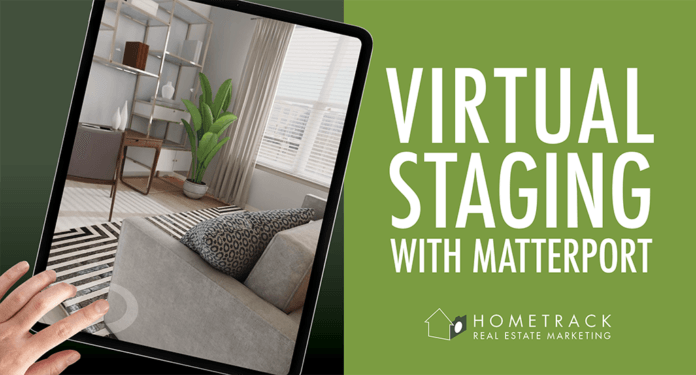
Virtual staging is a quick and cost-effective alternative to traditional home staging. Featuring a limitless array of design elements, virtual staging allows for a home to be staged after a photo shoot – without the need for moving heavy furniture from room to room. Hometrack Real Estate Marketing offers virtual staging solutions to help your properties sell faster . And now, they have expanded their service to include virtual staging of your Matterport 3D virtual tours . What exactly is virtual staging and how is it done? What are its benefits over traditional staging services? How might virtual staging enhance your Matterport showcases? And how can Hometrack help? What is virtual staging? Nearly all buyers suggest that real estate photographs are the most important factor when viewing a home on the internet – a pretty important detail, since more than ninety percent of those buyers begin their home search online. That means staging a house for a photo shoot can be a big advantage. According to the National Association of Realtors (NAR), more than eighty percent of buyers’ agents believe that home staging makes it easier for their buyers to visualize a property as their future home. NAR also reports that a significant percentage of agents say that staged homes sell faster and at a higher price than those that are not staged. But what is virtual staging? Virtual staging involves the enhancement of digital real estate photos to create a true-to-life rendering of a staged room. With the help of photo-editing software similar to that used for computer graphics in the movies, a real estate photographer or digital staging professional can add life to a room with furniture and decorative items, creating an exceptionally realistic representation. Anything can be added: tables, chairs, sofas, rugs, wall hangings, and more. And if something appears in a picture that shouldn’t be there, it can be removed during the process. Virtual staging vs. traditional staging The physical act of staging a home has long been a real estate marketing tool agents have employed to help prospective buyers imagine themselves living in a space. But for many sellers (and agents), home staging has been a luxury they could not afford. Not only does staging cost a considerable amount of money, it takes a lot of time and is quite intrusive if the seller still lives onsite. Virtual staging presents a better alternative. In a matter of minutes, a room can be transformed from empty to fully furnished. A dining room table and chairs can appear, kitchen appliances can be installed, artwork can be hung. But the house does not need to be completely empty to be staged virtually. With a few amendments, a home can be photographed while still occupied, and virtual staging can fill in the details to augment or supplement its current contents. As long as you remain within the limits of disclosure laws and the principles of truth in advertising, you can spruce up properties for your sellers and spark the imaginations of your buyers. Among the capabilities of virtual staging are the following: Stage an empty room so that visitors can better visualize the space Change the design style of a home to suit your buyers (ie. from traditional to rustic or from minimalist to mid-century modern) Change the purpose of a room (from an office to a child’s playroom, for instance) Change flooring or add walls Eliminate unwanted items (such as a toy on the floor or a moose head above the mantle) Correct scuff marks on the walls Blur sensitive data Change the view from the windows (add light, sky, etc.) Beyond the visual details that can be added or erased from an image, virtual staging also allows a homeowner to maintain privacy. Family photos, college degrees, school pennants, or other items that reveal personal information can be eliminated with virtual staging. What’s more, the recent spread of COVID-19 and the need for social distancing have moved many showings and open houses to the internet. In-person events have been put on the back burner in favor of real estate videos and 3D virtual tours . Virtual staging eliminates the extra foot traffic of traditional staging and works seamlessly with your listing photographs and your Matterport tours to maintain a safe environment for your clients. Virtual staging for your Matterport 3D virtual showcases As a compliment to the selection of photographs that accompany each of your listings, a Matterport virtual tour captures images of a home and offers up its “digital twin”. Complete with dollhouse and floor plan views to help buyers better envision the space, a Matterport showcase provides an immersive experience as close as possible to the real thing. With Matterport, visitors can walk the hallways, investigate every room of a house, every nook and cranny on every floor. They can read highlighted information about property features with notes called “Mattertags”, and they can accurately measure walls and doorways. They can travel outside and tour the yard. Videos and 360 degree panoramas can also be embedded in a Matterport showcase. And it can all be viewed on any device from practically anywhere in the world. Now, Hometrack can refine your Matterport 3D virtual tours with virtual staging. How can Hometrack help with virtual staging? Hometrack has long been a preferred Matterport Service Partner. Recently, Hometrack developed a new partnership with VRPM , the UK’s premier Matterport service provider and experts in virtual staging for Matterport. They are a group of passionate technologists, developers, and photographers who lend their custom digital tools to make your virtual tours come alive. According to Hometrack, VRPM not only delivers results that are second to none, they also provide clear communication and prompt service. When you trust Hometrack and VRPM with your Matterport digital twin , you will receive a virtual tour staged to reflect your needs and those of your seller – and customized for your buyers – in as little as forty eight hours for a fraction of the cost of traditional staging services. A recent study revealed that seventy seven percent of agents believe staging helps them to sell a property. Now, with Hometrack, you are able to add virtual staging of your Matterport tours to the list of services you offer to help your clients move through the market.
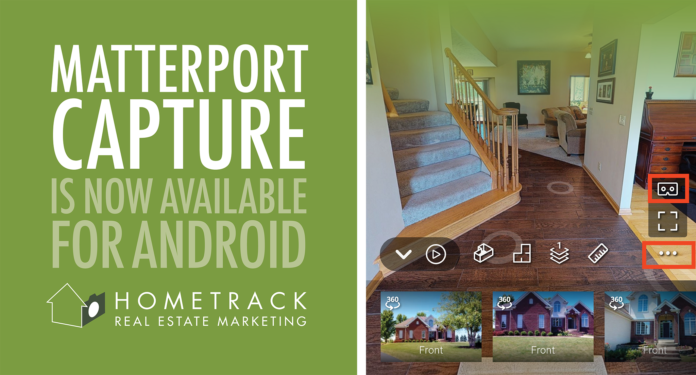
Not long ago, Matterport introduced their 3D camera app for iOS that allows anyone to capture and share spaces with the iPhone in their pocket. Of course, that advancement left millions of Android users out in the cold or searching for other options. Now, Matterport has made a move toward including those Android aficionados with their new beta version of Matterport Capture for Android. Virtual tours have fast become a go-to option as real estate agents adapt amidst the COVID-19 pandemic that has prevented buyers from getting out to visit homes and preempted traditional events like in-person open houses . Even prior to the emergence of the coronavirus, buyers were likely to begin their home searches online. And as the market has shifted toward online marketing tools – social media, videos , virtual tours – buyers and sellers have come to enjoy anytime access to the homes they view online. Matterport leads the way when it comes to capturing and indexing 3D spaces. In less than a decade, they have taken the concept of a virtual tour to ever-new realms. Their industry-leading online platform and Cortex AI software builds a digital twin of any space, indoors or out, that can be shared and viewed in a myriad ways. Matterport is a trusted name across industries ranging from travel and hospitality to architecture to facilities management, and many more, including (especially) real estate, where buyers believe 3D home tours are essential. With Matterport, real estate agents have the option to feature a home, hold a virtual open house, showcase local attractions, and highlight their own business on Google Street View . A new partnership with the online rental marketplace, Zumper , has expanded reach into multi-family properties. Virtual tours of any property can be shared on a website, by email, and through social media channels. When it comes to creating a 3D tour, images can be captured on any one of several compatible 3D cameras, including an iPhone . Those images are then uploaded to the Matterport web portal where they are processed quickly into a compellingly accurate 3D representation. But not everyone is interested in purchasing a camera dedicated to 3D virtual tours , such as Matterport’s flagship camera , the Pro 2. And not everyone carries an iPhone in their pocket or purse. Now, for the first time, faithful Android users who have felt left out – not only in the US, but particularly across Asia, Europe, and Latin America – have hope of another option. Matterport has worked to bring the power of immersive 3D to a broader path of potential customers with the launch of their public beta version of Matterport Capture for Android. This is the first step in bringing 3D capture capabilities to Android devices. Capture for Android works in much the same way as the iOS version. You simply download the app from the Google Play Store onto your Android compatible smartphone or tablet and then pair it with a compatible camera. You control the scanning process and upload images through your phone and let Matterport do the rest. While this beta version is being tested, Matterport is working to bring smartphone image capture capabilities to Android devices as well. That way, you can use the onboard camera to scan your spaces just as someone might with an iPhone. For now with Capture for Android beta, you need a supported camera: Matterport Pro2 or Pro2 Lite Insta360 ONE X , ONE R, or ONE X2 Ricoh Theta Z1, V, or SC2 Matterport continues to build on this list of cameras – including onboard Android cameras. It is no secret that buyers, sellers and agents alike love 3D virtual tours . In fact, most customers prefer to work with agents who offer virtual tours. With tools like a Matterport digital twin you can future proof your business and attract more interest in your listings. And now, Matterport Capture for Android is here to help you do it a lot easier.
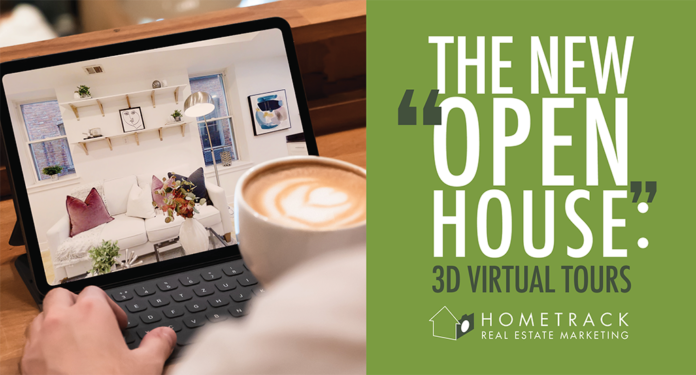
Some would say they are glad to see 2020 in the rear view mirror. For many people it was a year of challenges, one upon another. Now, a new year brings hope of a new direction. A fresh start. And yet many of the challenges of last year are still here. COVID-19 is still making a mark on people’s lives – and on the real estate market. Strict stay-at-home orders may not be as widespread as they were for a time, but consumers remain reluctant to return to face-to-face gatherings – including traditional open houses . The challenges of the past ten or twelve months have given rise to a number of new ideas and innovations, and have prompted agents to consider new applications of time-tested strategies. One of the ways that agents have adapted in the face of a worldwide pandemic is with Matterport virtual open houses. Buyers in just about every market across the country have become increasingly uncomfortable visiting open houses. Sellers are no more enthused about welcoming scores of people through their homes, either during an open house event or for routine showings. The idea of exploring a home – or of inviting people to explore – has taken a backseat to concerns over coronavirus and staying safe. A virtual showcase offers a host of benefits to buyers, sellers, and agents alike. When the real estate market is flooded with listings, a Matterport 3D tour helps a home to stand out from the crowd; in fact, buyers and sellers prefer to work with an agent who offers virtual tours. When listings are few, those virtual tours help to reach more clients and relieve the bottled up demand. In recent years, the interest of out-of-town buyers has increased; 3D virtual tours allow them to “visit” a property from anywhere in the world. But more than just a convenience, 3D home tours have become a necessity in the age of coronavirus , where social distancing is the order of the day, if not officially, at least in practice. Many real estate offices had to discontinue in-person open houses at some point in the last year. Even as economies have begun to open back up, many prospective clients, uncomfortable with in-person tours, have been hesitant to pick back up where 2019 left off. Certainly, those who are considered “high risk” of infection are reluctant to jump on board with face-to-face interactions when other options exist. So, virtual open houses have become, to use an overused phrase, the “new normal”. Sure, agents have adopted or adapted other strategies too. Print advertising , for example, is as important as ever. Paper and ink ads are seen as more credible than other forms of media by most sectors of the population. And the tactile experience of holding a “real” postcard or brochure over a virtual one is appreciated by many. Likewise, agents have spent a good deal of time creating video walk-throughs and other real estate videos . Those are fantastic tools, especially in the realms of social media and email marketing campaigns. Add drone footage to the list and you have a wide array of material to present to buyers and sellers. But they do take a good deal of time to create. And to edit. That makes them difficult to deliver for every listing. Besides, a video does not offer the immersive experience that is only possible (virtually) with a 3D tour. That is why agents have turned to virtual tours for their customers. Matterport creates a “ digital twin ” of any space, inside or out, that can be viewed on any device anywhere in the world. Virtual visitors can walk through every room in a home, read posted highlights of home features, accurately measure walls and doorways and other structures, and even view embedded videos – all from the comfort and safety of their own homes. Matterport allows higher-risk customers – and anyone else who wishes to remain distanced – an opportunity to visit, view, and even purchase a property remotely. Sellers can straighten up and stage their home one time for the camera scan, and keep their own families safe by reducing the number of people traipsing through. Besides lending benefits to their sellers and buyers, agents have the ability to gauge property interest and exposure. Matterport allows an agent to track the number of visitors to each tour and pinpoint the best marketing strategies for each property. Homes often tend to sell faster and at higher prices with virtual tours as well. And an agent can either invest in a compatible 3D capture camera (such as the Matterport Pro2, Insta360 OneR, or even an iPhone ) or hire a professional photography service to scan a home. With so many benefits, there is a pretty good chance that 3D virtual tours have become the new open house for a long time to come. The real estate market was already trending toward virtual tours before coronavirus was a common word; COVID-19 gave it a shot in the arm. Add virtual reality capabilities to the mix and it is easy to see that virtual open houses are the future – and the future is now.
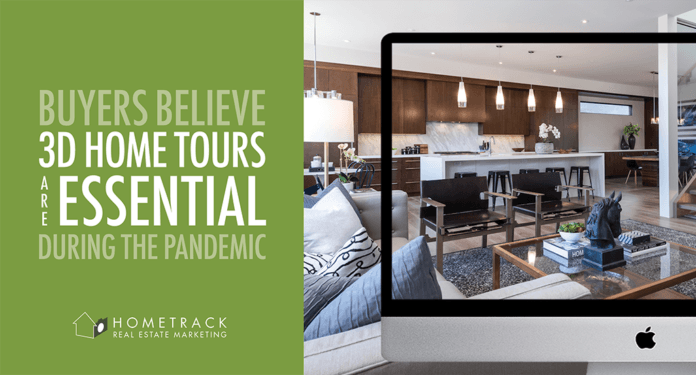
COVID-19 has changed things. A lot of things. Folks have had to adjust to elbow bumps in place of handshakes. Or smiling with their eyes because the rest of their face is covered with a mask. We tend to avoid crowds, limit the sizes of our gatherings, work remotely rather than commuting to work, and view homes for sale through 3D home tours . Some of the changes are less than desirable, and we hope that they disappear as quickly as they appeared. Too many workers have lost jobs. Too many small businesses are going out of business. There is even talk about “cancelling” Thanksgiving. Or Christmas. But not all of the changes are for the worse. For instance, some jobs that have been performed remotely during the pandemic just might remain that way after it is in the rear view mirror. People are discovering new ways to stay in touch through social media and video conferencing. And digital tools have revolutionized the way business is done. That is especially true in real estate, where drone photography , social media, and 3D virtual tours have changed the way that buyers view a property, sellers show a property, and agents sell a property. Rolling restrictions for in-person property showings due to shutdowns, stay-at-home orders, and safety concerns over potential exposure to the coronavirus , have given rise to the need for – and reliance on – virtual solutions. Matterport , the leaders in spatial data capture and the developers of the “ Digital Twin ” recently teamed up with powerful online real estate brokerage Redfin to explore how the preferences of home buyers and sellers has shifted since the onset of the pandemic. Here are some of the details that they discovered. Better for Buyers At the outset of the pandemic, Matterport surveyed a thousand home buyers and learned that those buyers were no longer satisfied with static 2D photographs of a property and would “overwhelmingly opt” for a more immersive experience . Now, more than seven months into the health crisis, nearly eighty percent of home buyers say that they are choosing to view more properties online with a virtual tour because of safety concerns, according to their new survey with Redfin. But the advantages listed by buyers do not stop there. As important as safety might be, when asked to rank the top benefits of 3D tours , home buyers identified 1) the ability to view the floor plan of a home; 2) the ability to visualize the entire home in Dollhouse view; and 3) the ability to measure rooms, walls, doors, and more. Those were their top three features of a 3D tour. Buyers also indicated that they were more likely to trust the images in a 3D tour over static photos. Seventy eight percent of buyers were concerned that those photographs might be enhanced, “Photoshopped”. On the flip side, they felt that a virtual tour offered a more realistic view of a property – at least eighty two percent of them did (even more sellers felt the same). And that confidence in 3D tours leads many buyers to consider purchasing a property sight-unseen. More than seventy percent suggested that they would do so. That is an increase of sixteen percent since Matterport asked the same question earlier in the pandemic . Better for Sellers Safety was also on the minds of home sellers when they responded to the survey. But that was not always the case. Almost seventy percent of sellers who did not believe 3D tours were necessary before the pandemic now feel that they are. That statistic is even more pronounced in non-urban communities. At a time when it is difficult to schedule in-person showings and, as the New York Times suggested, “the open house is dead”, 3D tours offer an alternative that keeps everyone safer. They also put more of a home in front of more eyes in the marketplace. That includes casting for buyers outside the local market. The pandemic has made it risky for buyers to travel to see listings in other communities or states; 3D tours allow sellers to not only receive remote “visitors”, but also to consider a timely offer in a competitive market. Sellers have picked up on the tendencies of home buyers. Eighty three percent of sellers now think that their home could be purchased sight-unseen (indicating an eleven percent increase in the last several months). Of those sellers who, at the beginning of the pandemic, would not have accepted a remote offer based on a 3D tour alone, sixty four percent would now do so. Top reasons to trust a 3D home tour among sellers? Attracting more serious buyers and selling their homes faster. Safety concerns, although important, took a back seat, as did closing at a higher price. Advantages for Agents If it is true that ninety percent of home buyers begin their journey online, then the first impressions that they have of your listing is essential. That may likely start with high-quality and professional 2D real estate photography , where nearly every searcher’s initial experience with a home is through the first picture you post in the listing. That image gets about twenty seconds worth of consideration. Assuming you grab their attention with that first image, your potential buyers are interested in a realistic representation of the property. To many of them, that equates to a virtual tour. In a market where scheduling in-person tours is a challenge, open houses are few, and online opportunities are many, 3D tours stand out as a virtual open house that can be viewed 24/7, nearly anywhere on the planet. And buyers and sellers have come to expect them. Just ask Redfin, who offers Matterport 3D tours with ninety four percent of their listings. The number of virtual walkthroughs has increased by almost five times on their site since the beginning of the pandemic. 3D virtual tour technology is doing more than filling in for more traditional forms of real estate marketing. It would seem that buyers believe virtual tours are here to stay.

